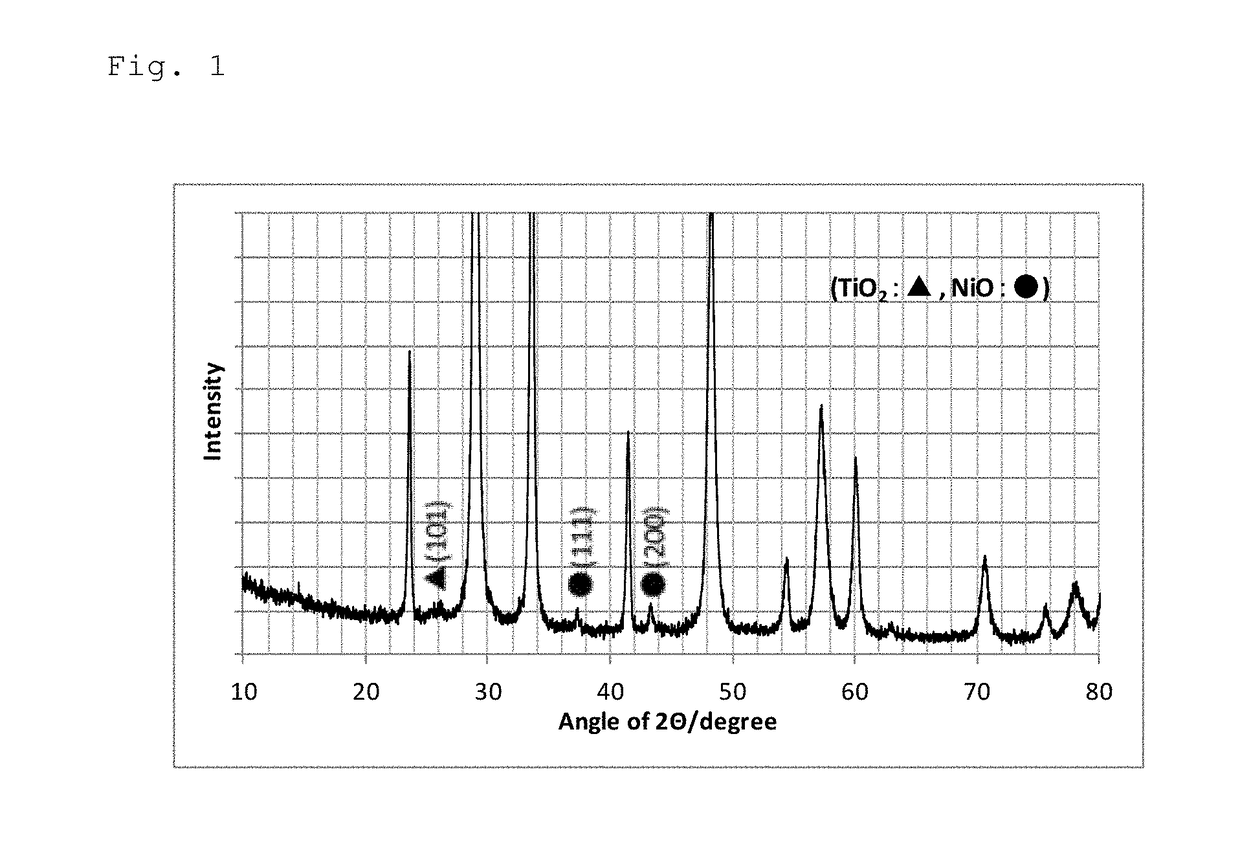Steam reforming catalyst for hydrocarbons
a catalyst and steam technology, applied in the field of steam reforming catalysts, can solve the problems of increasing hydrogen production costs, and achieve the effect of preventing the catalytic activity reduction and high conversion from hydrocarbons
- Summary
- Abstract
- Description
- Claims
- Application Information
AI Technical Summary
Benefits of technology
Problems solved by technology
Method used
Image
Examples
example 1
[0065]37.5 g of a zirconium oxynitrate solution (7.5 g in terms of ZrO2), 10.35 g of nitric acid (7.0 g in terms of HNO3), and 900 mL of pure water were added to a 2-L separable beaker, and the resultant mixture was stirred to prepare an aqueous zirconium solution.
[0066]The aqueous zirconium solution was heated to 98° C. by a mantle heater, and stirred under heating reflux for 8 hours [step (a)].
[0067]Then, 131 mL of a cerium (IV) nitrate solution (an aqueous cerium solution, 26.2 g in terms of CeO2) was added to the aqueous zirconium solution to prepare a mixed aqueous solution. The mixed aqueous solution was heated to 98° C. again by a mantle heater, and stirred under heating reflux for 20 hours [step (b-1)].
[0068]The solution obtained from the step (b-1) was put into a 3,000-mL beaker, and 10.4 mL of a praseodymium nitrate solution (an aqueous additional element solution, 5.2 g in terms of Pr2O3) and 1,000 mL of pure water were added to the beaker. The resultant mixture was stirr...
example 2
[0079]A steam reforming catalyst of Example 2 was produced in the same manner as Example 1 except that the amount of the cerium (IV) nitrate solution used in the step (b-1) was 52.5 mL (10.5 g in terms of CeO2), the amount of the praseodymium nitrate solution used in the step (b-2) was 2.1 mL (1.05 g in terms of Pr2O3), the amount of the alumina sol BIRAL AL-7 available from Taki Chemical Co., Ltd. was 9.53 g, and the amount of the methylcellulose was 0.57 g. The steam reforming catalyst of Example 2 was subjected to the measurements in the same manner as Example 1. The results are shown in Tables 1 and 2.
[0080]The Ce content per 1 mol of the Zr was 1.0 mol. The Ni content was 83.6% by mole, and the Ti content was 16.4% by mole.
example 3
[0081]A steam reforming catalyst of Example 3 was produced in the same manner as Example 1 except that the amount of the cerium (IV) nitrate solution used in the step (b-1) was 157.5 mL (31.5 g in terms of CeO2), the amount of the praseodymium nitrate solution used in the step (b-2) was 2.1 mL (1.05 g in terms of Pr2O3), the amount of the alumina sol BIRAL AL-7 available from Taki Chemical Co., Ltd. was 20.0 g, and the amount of the methylcellulose was 1.2 g. The steam reforming catalyst of Example 3 was subjected to the measurements in the same manner as Example 1. The results are shown in Tables 1 and 2.
[0082]The Ce content per 1 mol of the Zr was 3.0 mol. The Ni content was 83.6% by mole, and the Ti content was 16.4% by mole.
PUM
| Property | Measurement | Unit |
|---|---|---|
| temperature | aaaaa | aaaaa |
| temperature | aaaaa | aaaaa |
| temperature | aaaaa | aaaaa |
Abstract
Description
Claims
Application Information
 Login to View More
Login to View More - R&D
- Intellectual Property
- Life Sciences
- Materials
- Tech Scout
- Unparalleled Data Quality
- Higher Quality Content
- 60% Fewer Hallucinations
Browse by: Latest US Patents, China's latest patents, Technical Efficacy Thesaurus, Application Domain, Technology Topic, Popular Technical Reports.
© 2025 PatSnap. All rights reserved.Legal|Privacy policy|Modern Slavery Act Transparency Statement|Sitemap|About US| Contact US: help@patsnap.com

